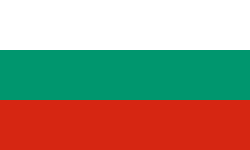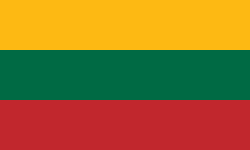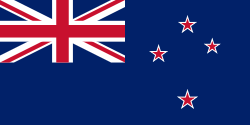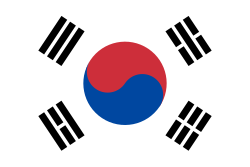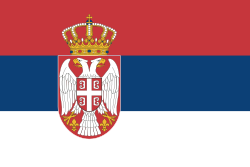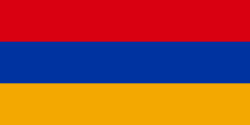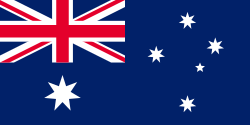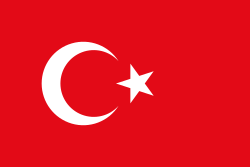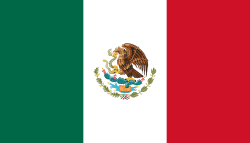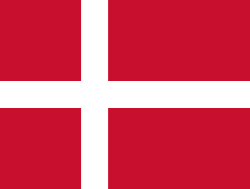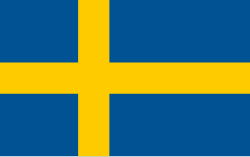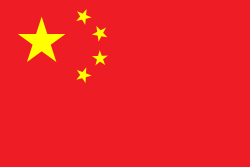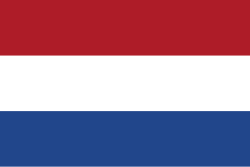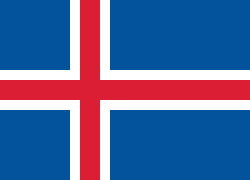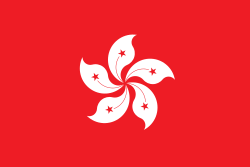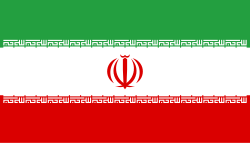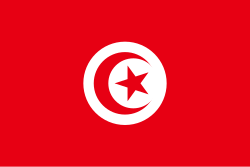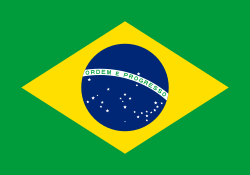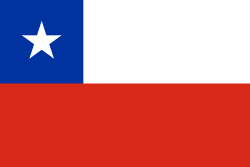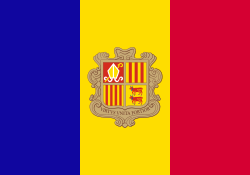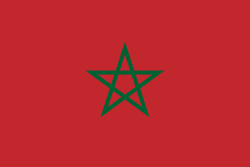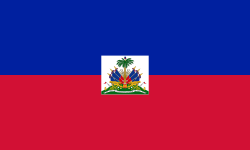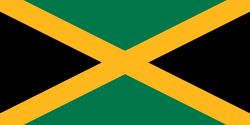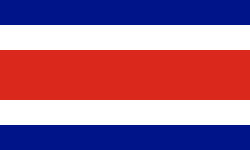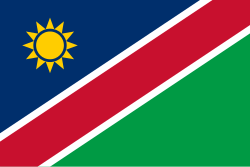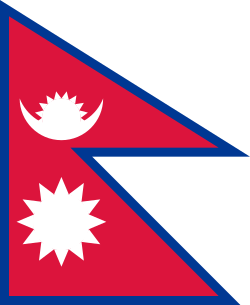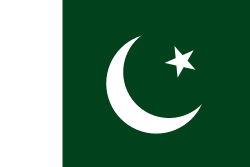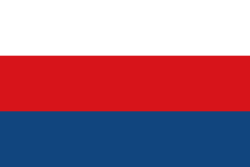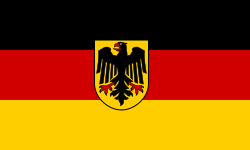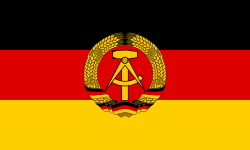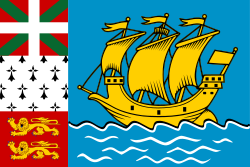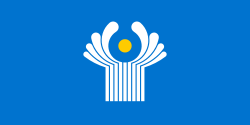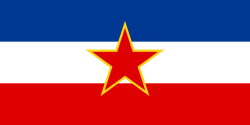Severokorejská hokejová reprezentace
| Kód IIHF | PRK |
|---|---|
| První zápas | |
(8. března 1974 v Grenoblu, Francie) | |
| Nejvyšší výhra | |
(6. dubna 2014 v Lucemburku, Lucembursko) | |
| Nejvyšší prohra | |
(15. března 1983 v Budapešti, Maďarsko) | |
Tým KLDR hraje každoročně Mistrovství světa v hokeji. Mužský tým v roce 2007 odstoupil z účasti na MS v Divizi II, a proto automaticky sestoupil do Divize III, kterou v roce 2008 beze ztráty bodu vyhrál. Na Mistrovství světa v hokeji Divize III 2015 zvítězili a postupují tak do skupiny B Divize II. Z té však v roce 2019 opět sestoupili do divize 3A, ale v roce 2022 se z důvodu pandemie covidu-19 odhlásili, rovněž se odhlásili z turnaje 2023.
V roce 2024 budou tedy startovali v divizi 3B.
Asijské zimní hry
Na 6. asijských zimních hrách, které se konaly v čínském Čchang-čchunu, obsadil reprezentační celek mužů 5. místo. Ženský tým skončil na 4. z pěti možných míst, překvapivě se umístil výše než historicky úspěšnější sousedé z Jižní Koreje.
Mistrovství světa v ledním hokeji
- divize D2
- divize D3
- Legenda: červené podbarvení - sestup, zelené podbarvení - postup, fialové podbarvení - reorganizace, změna skupiny či soutěže
| Rok | Místo turnaje | Umístění |
|---|---|---|
| MS – 2003 D2 | 4. místo | |
| MS – 2004 D2 | ||
| MS – 2005 D2 | ||
| MS – 2006 D2 | 4. místo | |
| MS – 2007 D2 | Odstoupení z turnaje | |
| MS – 2008 D3 | ||
| MS – 2009 D2 | 6. místo (sestup) | |
| MS – 2010 D3 | ||
| MS – 2011 D2 | Odstoupení z turnaje | |
| MS – 2012 D3 | ||
| MS – 2013 D3 | ||
| MS – 2014 D3 | ||
| MS – 2015 D3 | ||
| MS – 2016 D2 | 5. místo | |
| MS – 2017 D2 | 4. místo | |
| MS – 2018 D2 | 4. místo | |
| MS – 2019 D2 | 6. místo (sestup) | |
| MS – 2020 D3 | Zrušeno kvůli pandemii covidu-19 | |
| MS – 2021 D3 | ||
| MS – 2022 D3 | Odstoupení z turnaje | |
| MS – 2023 D3 | ||
| MS – 2024 D3 | 2. místo |
Reference
V tomto článku byl použit překlad textu z článku North Korea national ice hockey team na anglické Wikipedii.
Média použitá na této stránce
Georgian flag in Pantone MS.
An icon that represents a bronze medal
Flag of Serbia and Montenegro, was adopted on 27 April 1992, as flag of Federal Republic of Yugoslavia (1992-2003).
Flag of Serbia and Montenegro, was adopted on 27 April 1992, as flag of Federal Republic of Yugoslavia (1992-2003).
An icon that represents a gold medal
Flag of Australia, when congruence with this colour chart is required (i.e. when a "less bright" version is needed).
See Flag of Australia.svg for main file information.An icon that represents a silver medal
Used color: National flag | South African Government and Pantone Color Picker
| zelená | rendered as RGB 0 119 73 | Pantone 3415 C |
| žlutá | rendered as RGB 255 184 28 | Pantone 1235 C |
| červená | rendered as RGB 224 60 49 | Pantone 179 C |
| modrá | rendered as RGB 0 20 137 | Pantone Reflex Blue C |
| bílá | rendered as RGB 255 255 255 | |
| černá | rendered as RGB 0 0 0 |
Vlajka České republiky. Podoba státní vlajky České republiky je definována zákonem České národní rady č. 3/1993 Sb., o státních symbolech České republiky, přijatým 17. prosince 1992 a který nabyl účinnosti 1. ledna 1993, kdy rozdělením České a Slovenské Federativní republiky vznikla samostatná Česká republika. Vlajka je popsána v § 4 takto: „Státní vlajka České republiky se skládá z horního pruhu bílého a dolního pruhu červeného, mezi něž je vsunut žerďový modrý klín do poloviny délky vlajky. Poměr šířky k její délce je 2 : 3.“
Finská vlajka
Flag of Canada introduced in 1965, using Pantone colors. This design replaced the Canadian Red Ensign design.
Při zobrazení tohoto souboru lze snadno přidat orámování
The Flag of Iceland.
- Horizontal aspect ratio: 7:1:2:1:14;
- Vertical aspect ratio: 7:1:2:1:7.
This is the national flag of Belgium, according to the Official Guide to Belgian Protocol. It has a 13:15 aspect ratio, though it is rarely seen in this ratio.
Its colours are defined as Pantone black, Pantone yellow 115, and Pantone red 032; also given as CMYK 0,0,0,100; 0,8.5,79,0; and 0,94,87,0.Chinese Taipei Olympic Flag. According to the official website of Chinese Taipei Olympic Committee, Blue Sky(circle) & White Sun(triangles) above the Olympic rings is neither the National Emblem of the Republic of China, nor the Party Emblem of Kuomintang (KMT), but a design in between, where the triangles do not extend to the edge of the blue circle, as registered at International Olympic Committee in 1981 and digitally rendered in 2013. Besides, the blue outline of the five-petaled plum blossom is broader than the red one. Moreover, the CMYK code of the blue one and the Blue Sky & White Sun is "C100-M100-Y0-K0", and different from the Olympic rings (C100-M25-Y0-K0). Note that it's the only version recognized by IOC.
Chinese Taipei Olympic Flag. According to the official website of Chinese Taipei Olympic Committee, Blue Sky(circle) & White Sun(triangles) above the Olympic rings is neither the National Emblem of the Republic of China, nor the Party Emblem of Kuomintang (KMT), but a design in between, where the triangles do not extend to the edge of the blue circle, as registered at International Olympic Committee in 1981 and digitally rendered in 2013. Besides, the blue outline of the five-petaled plum blossom is broader than the red one. Moreover, the CMYK code of the blue one and the Blue Sky & White Sun is "C100-M100-Y0-K0", and different from the Olympic rings (C100-M25-Y0-K0). Note that it's the only version recognized by IOC.
The national flag of Kingdom of Thailand; there are total of 3 colours:
- Red represents the blood spilt to protect Thailand’s independence and often more simply described as representing the nation.
- White represents the religion of Buddhism, the predominant religion of the nation
- Blue represents the monarchy of the nation, which is recognised as the centre of Thai hearts.
Flag of Iran. The tricolor flag was introduced in 1906, but after the Islamic Revolution of 1979 the Arabic words 'Allahu akbar' ('God is great'), written in the Kufic script of the Qur'an and repeated 22 times, were added to the red and green strips where they border the white central strip and in the middle is the emblem of Iran (which is a stylized Persian alphabet of the Arabic word Allah ("God")).
The official ISIRI standard (translation at FotW) gives two slightly different methods of construction for the flag: a compass-and-straightedge construction used for File:Flag of Iran (official).svg, and a "simplified" construction sheet with rational numbers used for this file.
bendera Indonesia
Zelený pruh má znázorňovat většinové katolické obyvatelsto Irska, oranžový pruh reprezentuje protestantskou menšinu a bílý pruh uprostřed znázorňuje mír a harmonii mezi nimi.
Flag of Liechtenstein
Flag of Portugal, created by Columbano Bordalo Pinheiro (1857-1929), officially adopted by Portuguese government in June 30th 1911 (in use since about November 1910).
Při zobrazení tohoto souboru lze snadno přidat orámování
The national and official state flag of Haiti; arms obtained from File:Coat of arms of Haiti.svg. The civil flag can be found at here.
Flag of Jamaica. “The sunshine, the land is green, and the people are strong and bold” is the symbolism of the colours of the flag. GOLD represents the natural wealth and beauty of sunlight; GREEN represents hope and agricultural resources; BLACK represents the strength and creativity of the people. The original symbolism, however, was "Hardships there are, but the land is green, and the sun shineth", where BLACK represented the hardships being faced.
Flag of Namibia
Bundesdienstflagge (Flag of the federal authorities of Germany). Under German law, federal states, municipalities, institutions or private persons are not allowed to use this flag.
Flag of the Socialist Federal Republic of Yugoslavia (1946-1992).
The design (blazon) is defined in Article 4 of the Constitution for the Republic of Yugoslavia (1946). [1]




